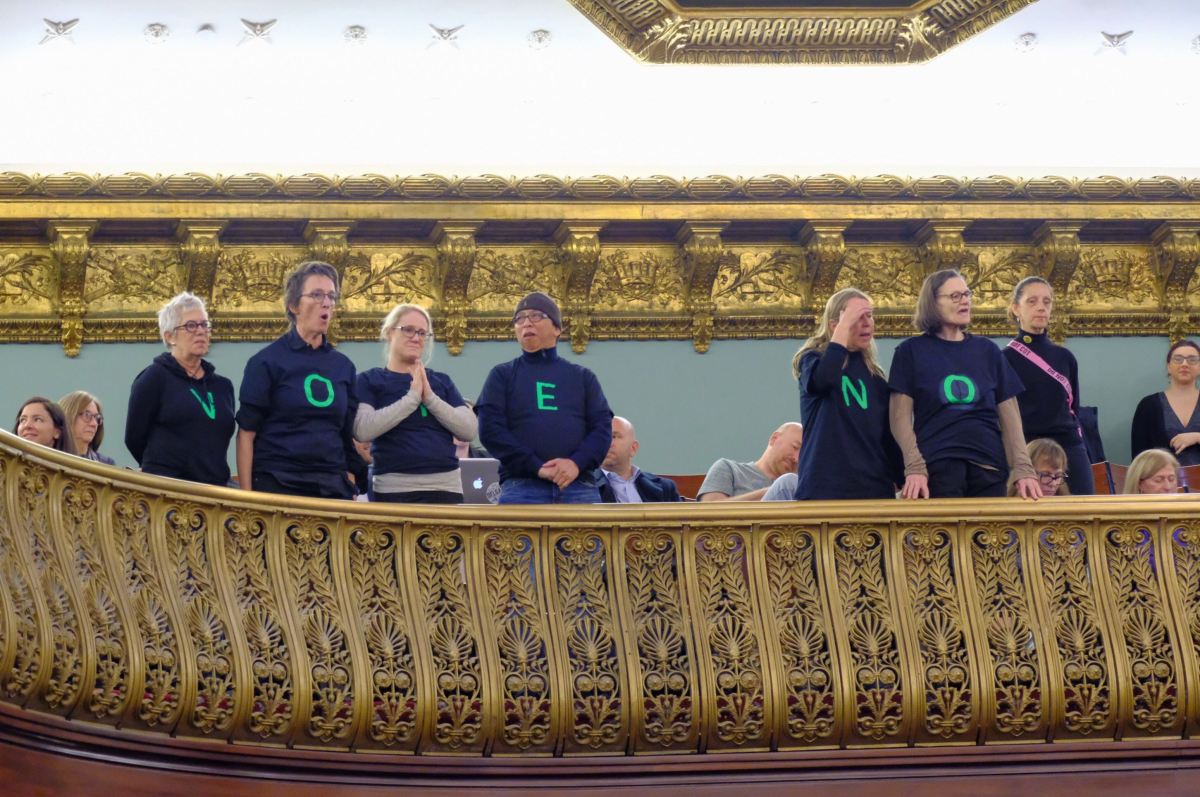Despite strong opposition by area residents, the City Council on Thursday greenlighted a $1.45 billion proposal to raise the elevation of East River Park by 8 to 10 feet to protect it from future flooding.
The East Side Coastal Resiliency Project was approved with 46 council members in favor, 1 against, and 1 abstention during Thursday’s City Council meeting.
The project, which will be done in phases, will bury 2.4 miles of waterfront, from Montgomery Street to East 25th Street, with landfill, which officials say will protect Lower Manhattan from Superstorm Sandy-like weather events and sea level rise projected in 2050.
Councilwoman Margaret Chin said the decision was not an easy one on her part, but preventing future displacement from climate change was the priority in her urge for her counterparts to vote in favor of the plan.
As she spoke many in the audience hissed loudly to voice their displeasure.
City Councilwoman Carlina Rivera, whose district is also within the scope of the project, was in support of the motion.
Prior to the vote, East River Park ACTION, a group led by Pat Arnow, campaigned heavily against the plan throughout November as it went through two committees and finally a final full City Council vote on Thursday. Arnow proposed a simple sea wall that would protect the park or an ecological resiliency approach.
However, City Department of Parks and Recreation Commissioner Mitchell Silver said at an Oct. 3 hearing at City Hall that preserving the green-space as-is would not be sustainable as rising sea levels is already killing trees through soil salinization.
Mayor Bill de Blasio said that Superstorm Sandy “dramatically changed the lives of New Yorkers all across this city.”
“With the rising prevalence of coastal storms in the era of climate change, the passage of the East Side Coastal Resiliency project takes a critical step forward in protecting 110,000 New Yorkers from dangers this city knows all too well,” he said.
The Department of Design and Construction has said the construction would be complete by 2023 and would be done in phases in order to retain some parkland for residents.
Councilman Mark Treyger said that Queens and Brooklyn — which he represents — are most vulnerable to climate change and have not had the same level of resiliency funding as the lower Manhattan project. He called it a “disparity” that gives the outer borough the short end of the stick.


































